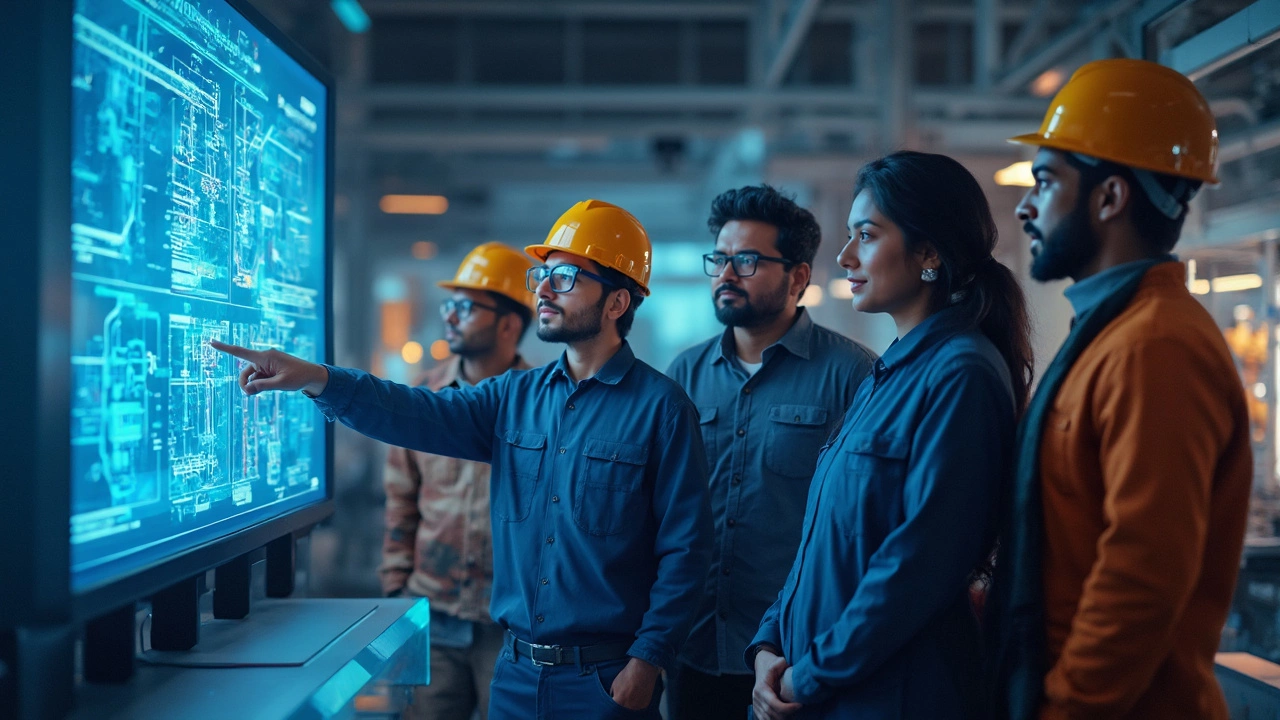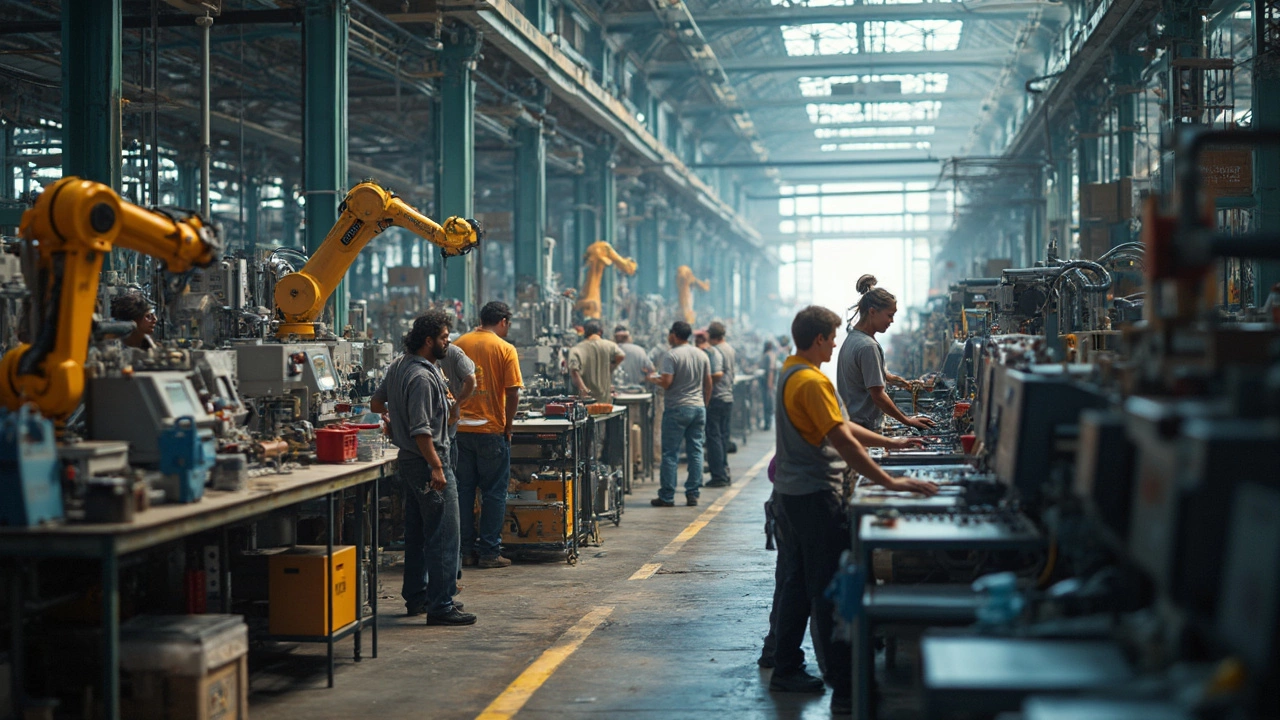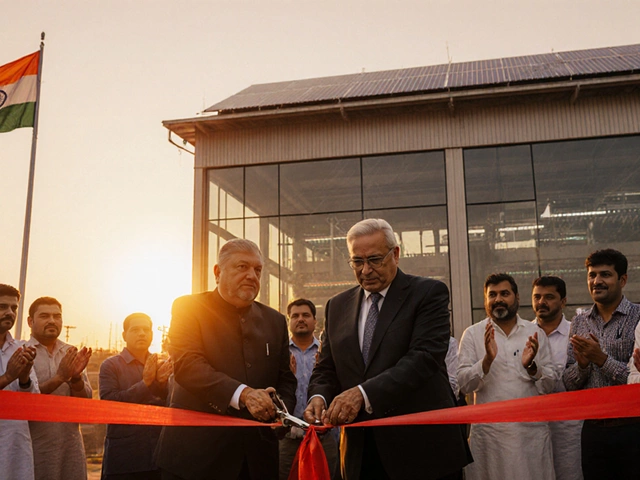Turn on any news channel and you'll hear people arguing about whether factory jobs are making a comeback in America. But is it just another buzzword, or is it actually happening? Some towns are seeing old plants reopen and brand new ones pop up, especially with all the hype around clean energy and tech. Still, ask anyone looking for a job on the factory floor, and the story gets complicated.
Companies aren’t just flipping a switch and rehiring whole towns overnight. There's a reason behind every headline about a factory reopening—government money, big incentives, or a shift in where stuff’s made. But it takes more than a promise from a politician to get folks back to work making things in the US again.
If you're wondering whether it’s worth learning the skills or switching careers, you need more than hype. You need the facts: where the jobs are, what they pay, and what it takes to actually land one in today’s market. Let’s unpack what’s really going on before you dust off your toolbox.
- What Sparked the Talk About Manufacturing’s Return?
- Do Government Programs Actually Make a Difference?
- How Has Manufacturing Work Changed?
- Tips for Getting Hired in Today’s Factories
What Sparked the Talk About Manufacturing’s Return?
The hype around manufacturing jobs coming back to America really took off around 2018. But it wasn’t just wishful thinking. A perfect storm of events flipped the script: trade wars, broken global supply chains, and big changes in tech. The COVID-19 pandemic piled on by making it painfully obvious how much the U.S. depended on stuff made overseas, from car parts to basic medicine.
The government and a bunch of companies started talking up something called “reshoring” — basically, moving factories back to the U.S. from countries like China or Mexico. On top of this, new laws kicked in, like the 2022 CHIPS Act, which threw billions of dollars at U.S. chip (semiconductor) factories. Suddenly, building things in America looked cool again. Companies like Intel and Ford made big headlines, announcing massive new plants and hiring plans.
Some numbers tell the story, too. U.S. manufacturing had lost about 5 million jobs between 2000 and 2010, mostly due to outsourcing and automation. But since 2021, the country has added around 800,000 new factory jobs. That’s the fastest growth since the late 1970s. Here’s a quick look:
| Year | Factory Jobs Added |
|---|---|
| 2021 | +350,000 |
| 2022 | +260,000 |
| 2023 | +190,000 |
Of course, these numbers don’t tell the whole story. Some of the jobs are high-skill tech gigs, and not all towns are seeing benefits. But there’s no denying that the talk about the return of manufacturing jobs is grounded in real changes, driven by everything from politics to new tech and global chaos.
Do Government Programs Actually Make a Difference?
Here’s the deal: government programs totally play a role in whether manufacturing jobs really return to America. Over the past few years, Washington’s thrown billions into programs meant to bring factories back. Think about the CHIPS Act from 2022—this law dumped nearly $53 billion into boosting chip production in the U.S., hoping to make America less dependent on overseas factories. Already, states like Ohio and Arizona have won massive chip plant projects because of these incentives.
It’s not just chips, either. The Inflation Reduction Act also pumped money into clean energy tech, so you’re seeing brand new battery and solar panel plants break ground in places like Georgia, Michigan, and Tennessee. The Department of Energy even hands out tax credits if manufacturers open or expand certain types of plants in the States.
But do all these big programs actually turn into real, well-paid manufacturing jobs? Here’s a look at what’s been happening:
- Since 2021, more than 800,000 new factory jobs have been added according to the Bureau of Labor Statistics.
- States offering their own incentives—like Texas and South Carolina—keep pulling in auto and tech companies with tax breaks and cheap land.
- But, there’s no guarantee every new plant will hire as many people as old-school factories did. Many run with a lot fewer workers, thanks to robots and automation.
If you want a quick peek at where the government is spending the most, check this out:
| Program | Main Focus | Recent Impact |
|---|---|---|
| CHIPS Act | Semiconductors | Thousands of jobs in Ohio, Arizona |
| Inflation Reduction Act | Clean Energy | New battery plants in Georgia, Michigan |
| Department of Energy Tax Credits | Green Manufacturing | Supports solar and EV jobs, mainly Midwest and South |
So, yes—government schemes are moving the needle, especially on high-tech manufacturing. But don’t expect a sudden return to packed factory floors like in your grandparents’ day. Most new plants want workers who understand modern machinery or can help run automation. If you’re planning your next move, keep an eye on training programs tied to these grants—they can be a shortcut into brand new careers in manufacturing.

How Has Manufacturing Work Changed?
Forget the old image of endless rows of workers just pressing the same button all day. Modern manufacturing jobs are a whole different ball game. Today’s factories are packed with robots, giant 3D printers, and computers that keep things running smoothly. That’s not just fancy talk—U.S. manufacturers added over 12,000 industrial robots in 2023, according to the Association for Advancing Automation.
Now, instead of muscle or routine, companies look for people who know how to run and troubleshoot machines. You don’t need a master’s in engineering, but even entry-level workers often handle computerized systems. Sure, some basic labor jobs are still around, but most new roles want skills like programming, machine maintenance, or quality checking with digital tools.
“Modern American manufacturing is less about brawn and more about brains—technology is at the core of almost every step,” said Scott Paul, president of the Alliance for American Manufacturing.
If you’re thinking of jumping in, here’s what’s changed:
- Tech skills rule. You can’t get by with just a strong back—knowing a bit of coding or how to read data is a huge plus.
- Safety has improved. Forget open flames and flying sparks everywhere. Automatic shut-offs and sensors make injuries way less common.
- Collaboration matters. Teams work together to solve problems fast, not just follow orders.
Check out what’s driving those changes:
| Year | U.S. Manufacturing Output ($ Trillion) | Number of Robots Installed |
|---|---|---|
| 2015 | 2.18 | 4,500 |
| 2020 | 2.33 | 10,800 |
| 2023 | 2.51 | 12,000 |
The message is clear: if you want to land—and keep—today’s factory jobs, get comfortable working with tech. Upskilling isn’t just a buzzword; it’s the difference between being hired or passed over when the next plant opens up.
Tips for Getting Hired in Today’s Factories
Landing one of those new manufacturing jobs isn’t like it used to be. Sure, some hands-on skills help, but most factories today care more about what you know with tech. That means you might need to brush up your resume and even pick up a certificate to stand out.
Here’s how you can boost your chances of getting hired in today’s US manufacturing scene:
- Learn Some Tech Skills. Modern factories use robots, AI, and fancy machines. Basic computer skills aren’t enough. Look into training for things like CNC (computer numerical control), PLC (programmable logic controllers), or 3D printing. Community colleges and local trade schools often have these classes.
- Check Out Local Training Programs. Thanks to government schemes, there are now thousands of free or low-cost worker training programs across states like Ohio, Texas, and Michigan. These programs are pushed by the federal CHIPS Act and Inflation Reduction Act, and partner with big name employers.
- Get Certified. Certificates from places like the Manufacturing Skill Standards Council (MSSC) or National Institute for Metalworking Skills (NIMS) can get you noticed. Employers trust these because they show you can hit the ground running.
- Don’t Skip Soft Skills. Employers aren’t just hiring anyone who can use a wrench. They want workers who can solve problems, pay attention to detail, and work on a team. If you’ve worked shift jobs, managed people, or handled inventory before, play that up.
- Apply Smart. Use job boards like Indeed and LinkedIn, but don’t forget factory websites or local hiring events. Some factories even hold “hiring days” where you can interview and get an offer the same week.
Want to see where the jobs are booming? Here’s a quick snapshot from recent Labor Department stats:
| State | Factory Job Openings (2024) |
|---|---|
| Texas | 56,000 |
| Michigan | 34,500 |
| Ohio | 29,700 |
| Georgia | 21,000 |
If you’re serious about a manufacturing job, start by seeing what programs your local community offers. Employers are desperate for folks who actually want to show up, learn a bit, and get the job done right.






